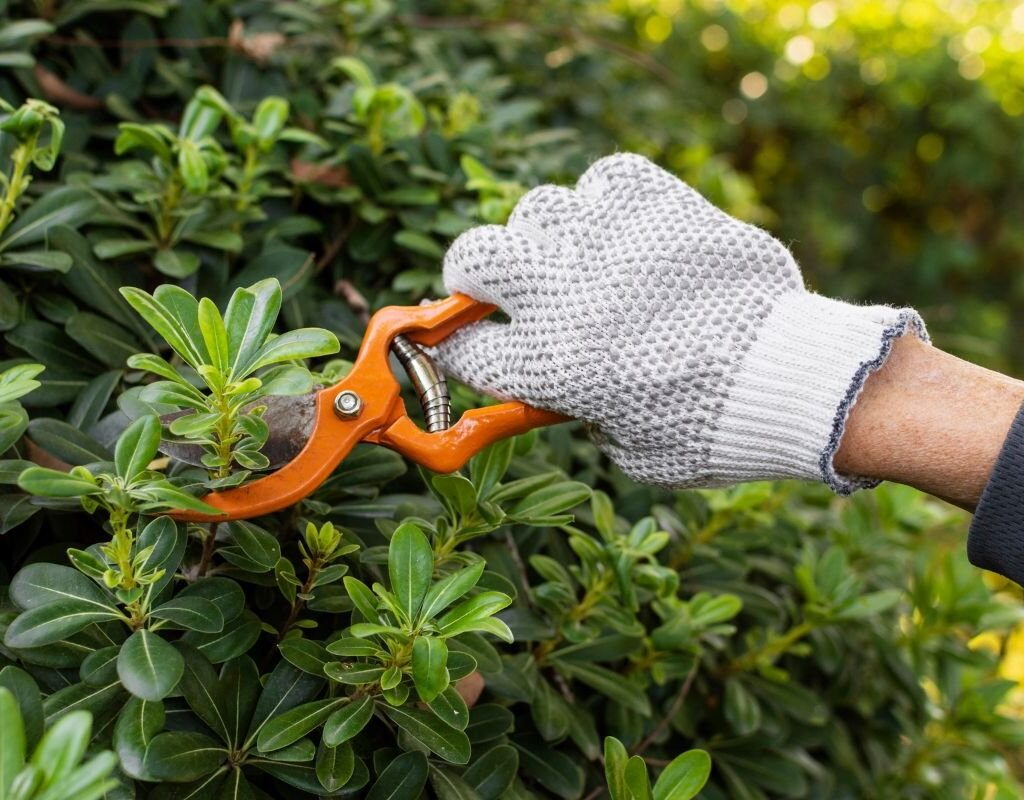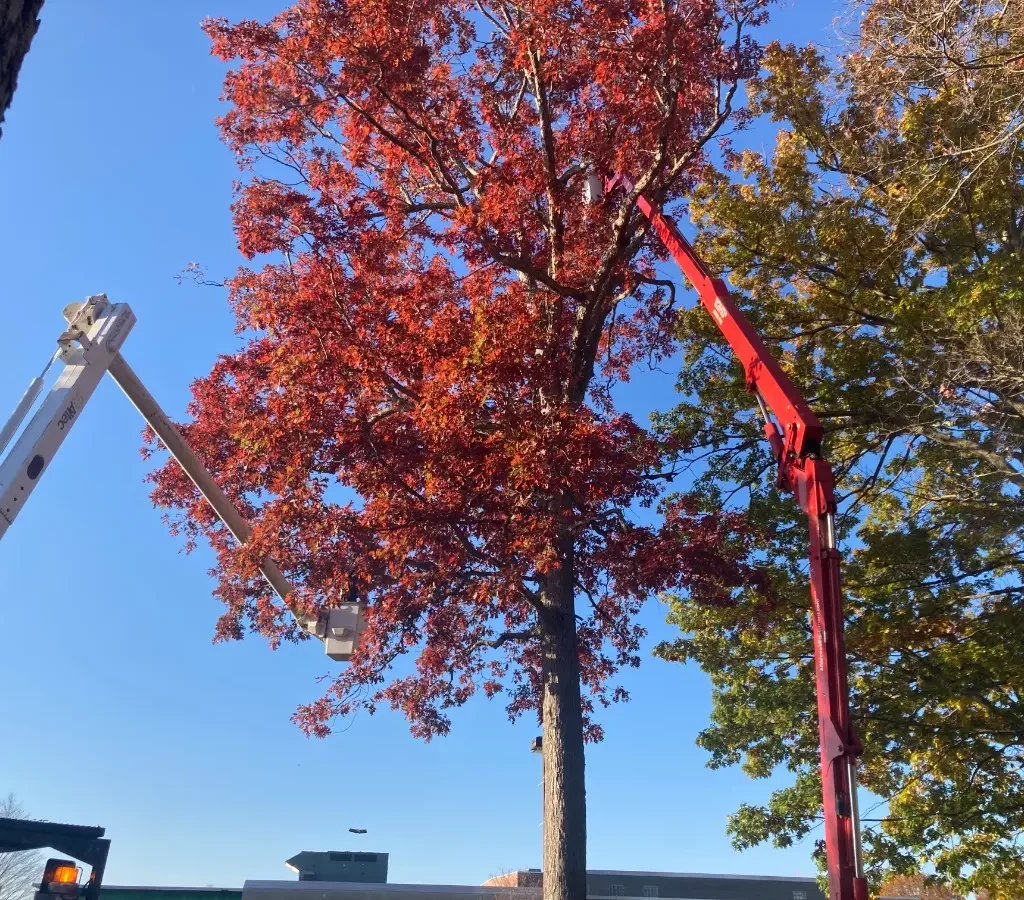Tree pruning is an essential service that is often overlooked by many homeowners. However, it plays a crucial role in ensuring the health and longevity of your trees. Understanding the importance of tree pruning and identifying the right time to prune can help you maintain a vibrant and healthy landscape. In this article, we will explore the various types of tree pruning services available and discuss why choosing a local tree pruning service is the best decision for your trees.
Understanding the Importance of Tree Pruning
Pruning is not just a cosmetic procedure for your trees; it is vital for their overall health. Regular pruning helps remove dead, diseased, or broken branches, which can cause harm to the tree and even pose a safety risk to your property. By removing these branches, you allow the tree to allocate its resources more efficiently, promoting new growth and preventing further damage.
Tree pruning services near me offer more than just convenience; they also bring a deep understanding of the local climate and soil conditions that can impact the health of your trees. By working with professionals who are familiar with the area, you can ensure that your trees receive the best care possible to thrive in their environment. Moreover, local services are often more invested in maintaining their reputation within the community, leading to a higher level of customer service and attention to detail.
Tree pruning is a practice deeply rooted in arboriculture, with a rich history dating back centuries. Ancient civilizations recognized the benefits of pruning trees to shape their growth and enhance their fruit-bearing capabilities. Today, modern arborists continue this tradition, employing scientific knowledge and advanced techniques to ensure the longevity and vitality of trees in urban and natural environments.
The Role of Pruning in Tree Health
Pruning plays a significant role in maintaining the health of your trees. By removing diseased or damaged branches, you prevent the spread of pests and diseases, protecting the overall well-being of the tree. Additionally, pruning helps improve air circulation and sunlight penetration, reducing the risk of fungal infections and ensuring proper tree development. Learn more about sunlight penetration at https://pubmed.ncbi.nlm.nih.gov/20134900/
Furthermore, pruning stimulates the tree’s natural defense mechanisms, prompting it to produce protective compounds that seal off pruning wounds and fend off potential pathogens. This process, known as compartmentalization, is crucial for the tree’s ability to heal and thrive in its environment.

Benefits of Regular Tree Pruning
Regular tree pruning offers several benefits. Firstly, it enhances the tree’s aesthetic appeal, giving it a more well-maintained and pleasing appearance. Moreover, pruning can improve the tree’s structural integrity by eliminating weak or poorly attached branches that could potentially break during storms or strong winds. Furthermore, pruning can help maintain property value by preventing overgrown trees from overshadowing and obstructing views.
Additionally, proper pruning promotes fruit production in fruit-bearing trees, ensuring a bountiful harvest for orchard owners and home gardeners alike. By selectively removing branches that compete for resources and redirecting growth towards fruit-bearing limbs, pruning optimizes the tree’s yield and quality of fruits.
Identifying the Right Time for Tree Pruning
Knowing the right time to prune your trees is crucial to avoid causing harm to them. While some pruning tasks can be performed year-round, others are best done during specific seasons. Understanding seasonal considerations for pruning and recognizing the signs that your tree needs pruning can help you schedule the service at the appropriate time.
Pruning your trees not only enhances their appearance but also promotes their overall health and longevity. By removing dead or diseased branches, you can prevent the spread of infections and improve the tree’s structural integrity. Proper pruning also encourages new growth and can help shape the tree for better sunlight exposure and air circulation.
Seasonal Considerations for Pruning
Generally, the best time for pruning deciduous trees is during their dormant season, which is late winter or early spring. Pruning during this time allows the tree to heal before new growth begins in the spring. However, pruning certain tree varieties, such as flowering trees, should be done immediately after they bloom to avoid removing potential flower buds.
It’s essential to consider the specific needs of each tree species when determining the pruning schedule. For example, evergreen trees are best pruned in late winter or early spring before the onset of new growth. On the other hand, fruit trees benefit from pruning in late winter to early spring to stimulate fruit production and maintain a healthy shape.
Signs Your Tree Needs Pruning
There are various signs that indicate your tree may need pruning. These signs include dead or broken branches, excessive crossing or rubbing branches, and branches that obstruct walkways, driveways, or utility lines. Additionally, if you notice signs of disease or pest infestation, such as leaf discoloration or wilting, it is crucial to consult with a tree pruning professional to determine the appropriate pruning measures. Click here to learn more about pest infestation.
Regularly inspecting your trees for these signs can help you address pruning needs promptly and ensure the continued well-being of your landscape. Remember that proper pruning techniques are essential to prevent damage and promote healthy growth, so if you’re unsure about the best approach for your trees, don’t hesitate to seek guidance from a certified arborist or tree care specialist.
Types of Tree Pruning Services
Tree pruning services encompass a range of techniques, each serving specific purposes. Understanding the different types of pruning available can help you determine the most suitable approach for your tree’s needs.
When it comes to tree pruning, it’s essential to consider not only the immediate benefits but also the long-term effects on the tree’s health and structure. Proper pruning can enhance the aesthetics of your landscape, promote healthy growth, and prolong the lifespan of your trees.
Crown Thinning and Raising
Crown thinning involves selectively removing branches to reduce the tree’s density and improve air circulation. This technique helps alleviate stress on the tree and minimizes the risk of storm damage. On the other hand, crown raising focuses on removing lower branches to increase clearance for pedestrians, vehicles, or buildings.
By strategically thinning the crown of a tree, arborists can create a more open canopy that allows sunlight to penetrate through, promoting photosynthesis and overall tree health. Crown raising, on the other hand, can improve visibility and safety around the tree, especially in urban environments where clearance is crucial.
Deadwood Removal
Deadwood removal is the process of cutting off dead branches from a tree. These branches have lost their vitality and pose a safety hazard. By removing deadwood, you not only eliminate the risk of falling branches but also improve the overall appearance and health of the tree.
Aside from safety concerns, deadwood removal can also prevent the spread of diseases and pests within the tree. Dead branches are more susceptible to infestations and fungal infections, which can compromise the tree’s health. Regular deadwood removal is therefore essential for maintaining the vitality of your trees.
Structural Pruning
Structural pruning involves the selective removal of branches to promote proper tree development and correct structural defects. This type of pruning is essential for young trees, as it helps establish a well-balanced branch structure, ultimately preventing future hazards and structural weaknesses.
Proper structural pruning can guide the growth of young trees in a way that prevents issues such as weak branch attachments and co-dominant stems. By shaping the tree’s structure early on, arborists can help ensure its long-term health and stability. Structural pruning is a proactive measure that can save you from costly tree maintenance and potential damage in the future.
Choosing a Local Tree Pruning Service
When it comes to tree pruning, hiring a local tree pruning service is the ideal choice. Local professionals possess the necessary knowledge and experience to assess your trees’ specific needs and provide appropriate pruning services. Additionally, choosing a local service eliminates the hassle and expense of hiring a contractor from a distant location.
Factors to Consider When Hiring a Pruning Service
When selecting a local pruning service, certain factors should be taken into consideration. Ensure that the service provider has the necessary certifications and licenses to perform tree pruning. It is also important to inquire about the company’s insurance coverage to avoid potential liability issues. Furthermore, read customer reviews and testimonials to gauge the quality of their work and customer satisfaction.
Another crucial factor to consider is the approach to tree health that the pruning service takes. A reputable local service will not only focus on the aesthetics of tree pruning but also prioritize the overall health and well-being of the tree. They should be able to assess the tree’s structural integrity, identify any signs of disease or pest infestation, and provide recommendations for long-term tree care.

Questions to Ask Your Potential Tree Pruner
Before hiring a tree pruning service, ask specific questions to determine their expertise and professionalism. Inquire about their pruning techniques, the equipment they use, and their knowledge of local tree species. Ask for references and examples of their previous work to assess their skill level.
Additionally, discuss with the tree pruner their approach to sustainable practices and environmental stewardship. A responsible tree pruning service will consider ways to minimize waste, promote tree health using organic methods, and ensure that their practices align with the preservation of the local ecosystem. By asking these questions, you can ensure that the tree pruning service you choose not only enhances the beauty of your landscape but also contributes to the overall health of the environment.
DIY Tree Pruning vs. Professional Services
While some homeowners may consider DIY tree pruning to cut costs, it is essential to weigh the pros and cons before attempting such tasks yourself.
Pros and Cons of DIY Pruning
One advantage of DIY pruning is that it allows you to have direct control over the process. However, improper pruning techniques can cause irreversible damage to your trees, leading to decay, disease, or even death. Additionally, DIY pruning can be time-consuming, physically demanding, and potentially dangerous if proper safety measures are not followed.
Why Professional Pruning is Worth the Investment
Professional tree pruning services provide expertise and experience that ensure your trees are pruned correctly and safely. They have the knowledge to identify and address any potential issues and can recommend the most suitable pruning techniques for your trees’ specific needs. Moreover, professional services have access to specialized equipment that allows them to perform the job efficiently and effectively.
By investing in professional pruning services, you not only safeguard the health and beauty of your trees but also save time, effort, and potential costly mistakes.In conclusion, tree pruning is an essential service for maintaining healthy trees. Understanding the importance of pruning and recognizing the right time to prune can help you provide optimal care for your landscape. By hiring a local tree pruning service, you ensure that your trees receive professional care and expertise. So, don’t hesitate to reach out to a professional today and give your trees the pruning they deserve for a healthy and vibrant future.
Learn more about Green Waste Removal on https://celebrationflorals.com/how-to-choose-the-right-green-waste-removal-company-near-me/

